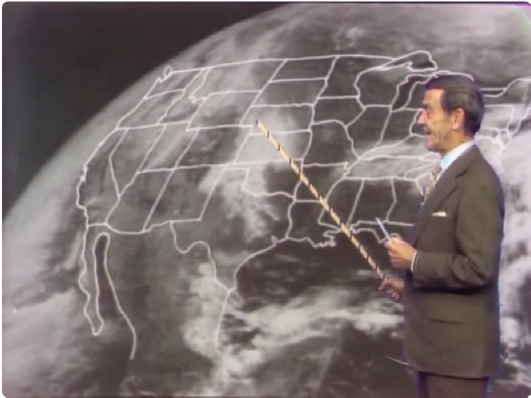4.8.10 - Apollo 16 Day 10 - Heading for home
Only one more colour image of Earth is available. AS16-122-19564 is part of a sequence of over-exposed shots of a crescent Earth rising over the lunar horizon. The crescent phase already places it towards the end of the mission, and there are several photographs of the ascent component of the LM earlier on in the magazine. The remaining images in the magazine show an increasingly curved lunar horizon indicative of a post TEI photography session.
Figure 4.8.10.1 shows a high resolution version of this image, and figure 4.8.10.2 shows this crescent earth that has had the levels, brightness and contrast adjusted in comparison with the ESSA 9.
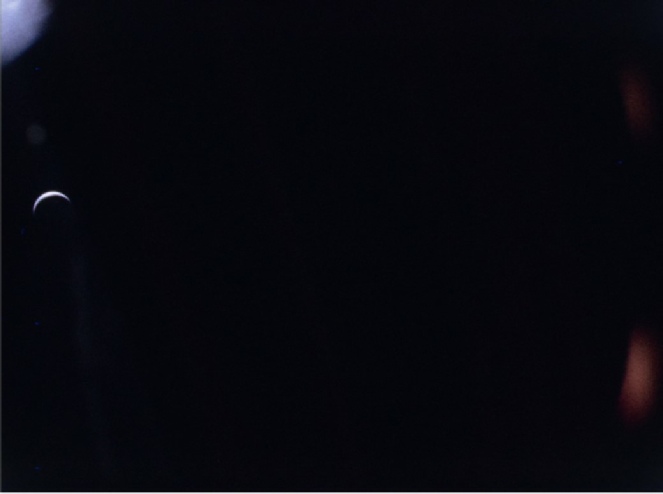
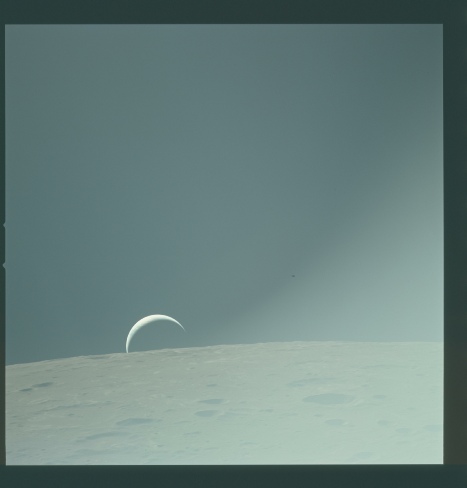
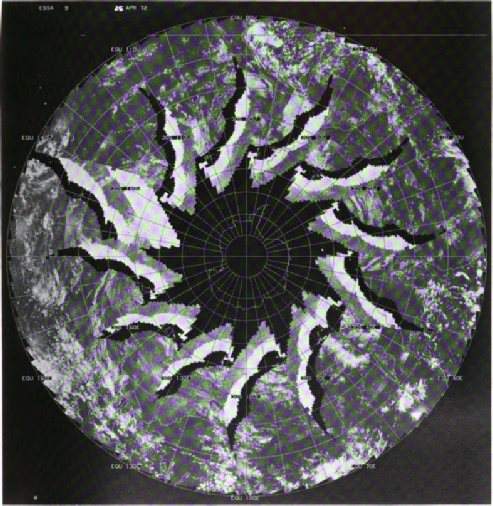
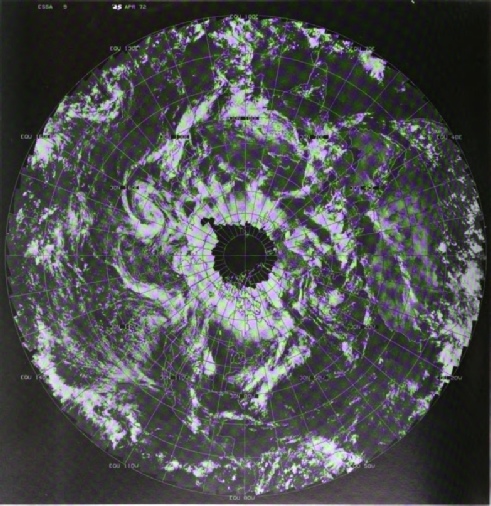
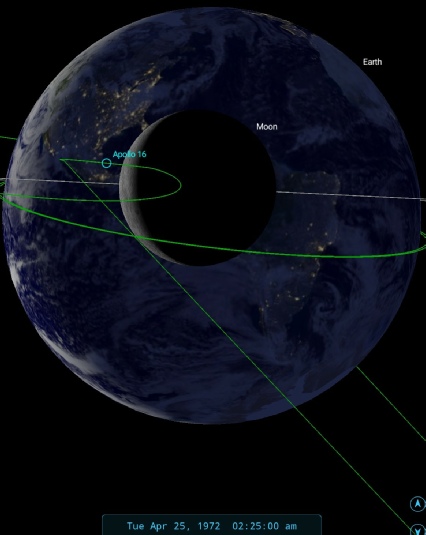
Figure 4.8.10.2: AS16-122-19564 compared with ESSA data, SkySafari time depiction, ESSA image from the 24h printed in the Sarasota Herald Tribune on the 25th. ATS-3 image shown on TV news dated the 25th. The Apollo image has been brightness adjusted to bring out detail.
As with previous missions where the Earth is a thin crescent, it does become more difficult to determine exactly when it was taken, and which weather systems on the ESSA mosaic match those on the Apollo image purely on the basis of the Earth photograph.
In this case there is some documentary evidence in the mission transcript and the photo index. The latter isn’t too helpful with AS16-122-19555, which is labelled merely as ‘dark’. A closer look, however, reveals the distant and now discarded ascent module (figure 4.8.10.3).
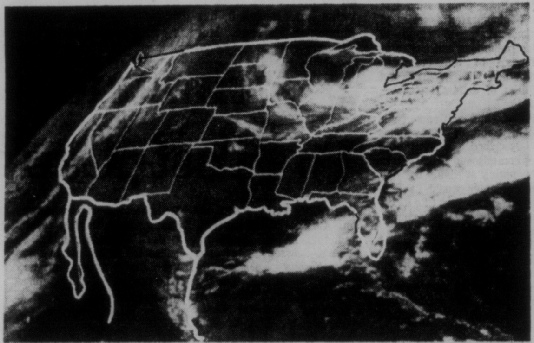
This puts a limit of the earliest the photograph could be at around 21:00 on the 24th.
The transcript also suggests that the image was taken during TEI in the early hours of the 25th (02:25 to be precise) – something the thickness of the crescent would support. The mission transcript records a number of crew comments preparing for the last Earthrise:
200 31 34 Young (onboard): I just got three pictures of it.
200 31 36 Duke (onboard): Hey, you got the one with the Earth in it?
200 31 38 Young (onboard): Yeah.
200 31 39 Duke (onboard): Beautiful.
...
200 32 32 Mattingly (onboard): What are you taking pictures of?
200 32 33 Young (onboard): [Garble] the Earth, and then me.
And then this remark to Capcom at AOS after the TEI burn:
200 36 31 Young: We got - we got some pictures of earthrise as we were climbing out. I bet they're really spectacular.
With an understanding of when the photograph was taken in mind, it is possible to identify the dark area of the visible crescent as the California coastline (blue arrow). This then allows what cloud systems that are visible to be placed on the ESSA mosaic. That mosaic's best fit track around the terminator would be number 4, or orbit 4409, commenced at 22:09 on the 24th. The image dated the 29th would be temporally much more distant than the one used here.
As always with thin crescent images, it is difficult to be absolutely certain that the cloud patterns identified on the photograph are the same as those on the ESSA mosaic, but the supporting evidence of the photo index and mission transcript do help.
One final, very fleeting image of earth can be found in the 16mm footage (available here). Immediately after shots of the returning ascent module docking with the CSM, there is a short sequence of shaky, hand held footage taken from lunar orbit (this in itself should be evidence of enough, as it shows features not visible form Earth yet is being filmed by a person, shown reflected in the CSM window). The curvature is pronounced, but there is no complete disk shown. As there is footage shortly after this of a complete lunar disk, it is likely to have been filmed around TEI.
Earth appears in shot for only a few frames, and there are no discernible surface features, but the size of the crescent is entirely consistent with the view that should be seen from the Moon at TEI. A still from the video is shown below in figure 4.8.10.4.
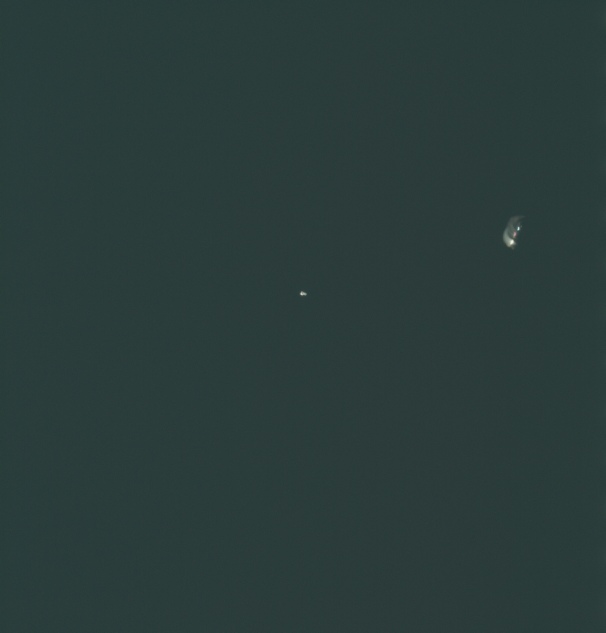
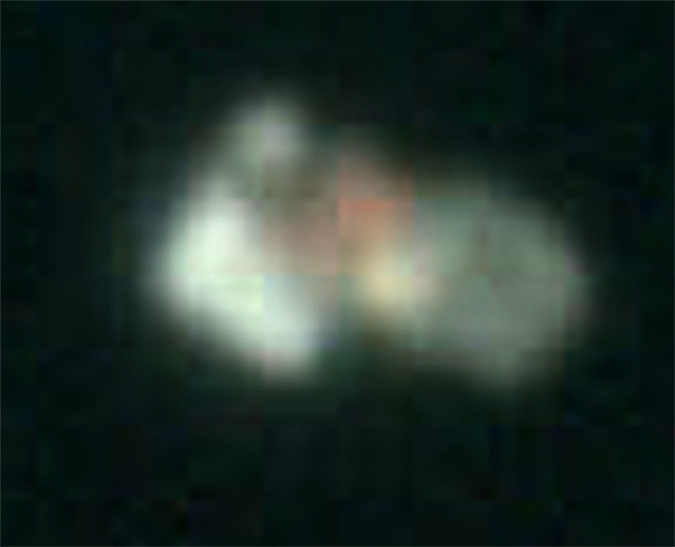
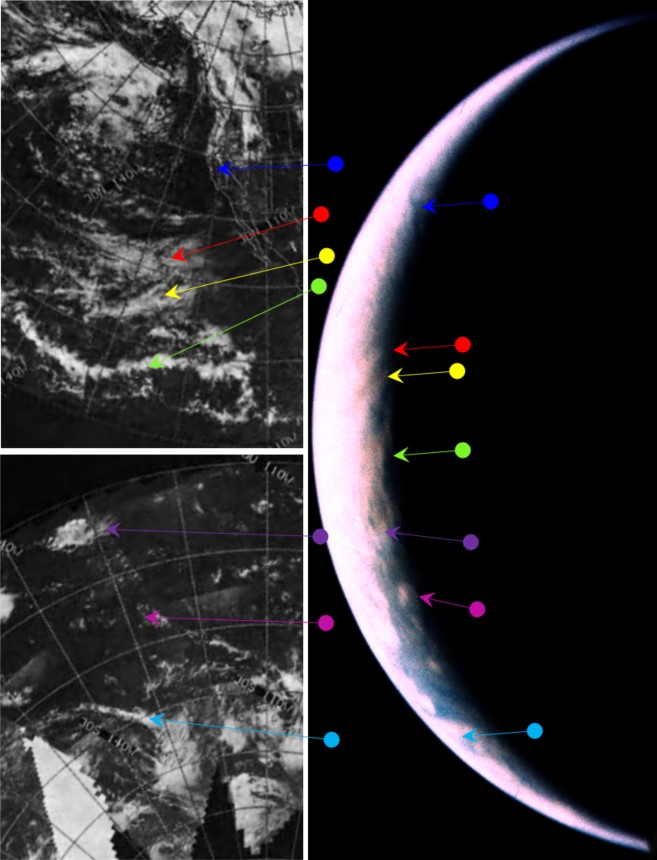
Figure 4.8.10.4: 16mm view of Earth during TEI
It obviously wouldn’t e prudent to try and identify anything in terms of surface detail from this, but as always it is consistent with the time it was taken.
One more vie wof Earth remains, but it isn’t from the 25th. Click the link for the 27th to see it.
